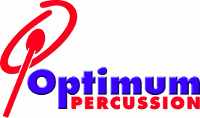Copy Play and Learn Guitar: each
Composer: Leader Bryce
The Copy, Play & Learn method is an easy and fun way for young people to start to play the guitar.
Based on songs appealing to young people, this method develops musicianship, note reading, fine motor skills, and encourages children to recognise and play rhythmic and melodic patterns as they piece together an evolving story based on a boy, his friends and family.
Allowing the child to play guitar as they develop the ability to process and interpret pitch and rhythm, this method makes use of the natural way in which a young person learns. By observing and imitating a logical pattern of notes as demonstrated by the teacher, a young person can confidently play fun and relevant pieces to a vibrant backing track.
Goal
Children love the idea of being able to play the guitar. As music teachers, we want to help them reach their potential, encourage them and set them on the best possible path. We’d also like to teach them to read music so that they can communicate effectively with other musicians.
How this guitar method encourages children to play.
By copying and playing the notes in the pieces they have just heard and seen as played by their teacher.
By engaging the students with relevant, contemporary, humorous and exciting songs. The pieces are “real songs” and children feel like they are playing along with a professional rock band. They are based on the day to day experiences of children and brought alive to music. A story, sprinkled with humour develops with each song.
In many of the songs, the melodic line that the children play is based on visually recognisable finger patterns and exercises. Encouraging dexterity using progressively harder finger and string combinations, students can play by noting a pattern brought to their attention by, and as played by their teacher.
The rhythm of the melody is easily learned through singing and clapping the words with which it is associated.
How this method encourages children to read music.
The backing tracks that the students play along with give the student an immediate sense of beat and rhythm.
Children often learn to read words through association. For example, a child, not knowing how to read, will often know that the word below the big “golden arches” says “McDonalds”. In a similar way, some rhythmic and melodic phrases are often repeated in different pieces throughout this book. The rhythm, and melodic contour of a pattern or phrase reminds the young beginner of a piece learned previously and they are then readily able to play it.
Children are often confused by the pitch of notes. They often think that notes are placed randomly on the stave and don’t perceive the connection between the alphabetical order, the ascending pitch of notes and the likely position on the guitar fingerboard as the notes make their way up the stave. In the Copy, play and learn guitar method, there are exercises the student can do, and flash cards that the teacher can make use of, to ensure that the student knows the names of the notes. Many of the pieces is this method are designed in such a way that the student does recognise the position of the note on the stave and is able to work out whether the line ascends or descends and hence the names of subsequent notes and therefore their position on the guitar fingerboard.
There are sometimes sections within the songs in this method, and, indeed whole songs themselves which encourage the student to play without first hearing or seeing what their teacher plays. These are the first steps toward mentally processing pitch and rhythm. In these cases, there are whole bars that may contain notes of just one pitch. This allows students plenty of time to process.
Besides that, no beginner guitarist I have ever met says they want to learn guitar so that they can play Nursery rhymes, Christmas Carols and songs that their Great Grandparents may have sung once.









